Night cake: Favorite recipe of Russian babushkas (RECIPE)
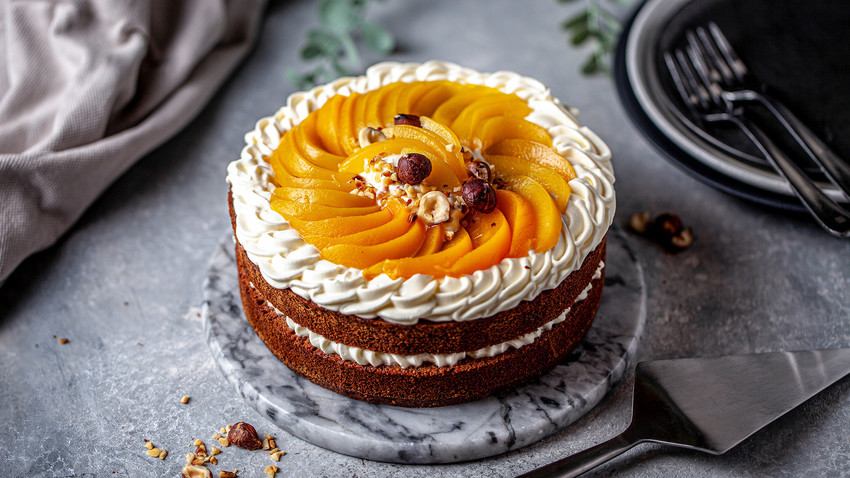
A delicious cake with the flavor of Perestroika.
Yulia MulinoI was sure that "Nochka" (little night) is our family recipe until I shared it on Instagram. It turned out that this cake was quite popular among my Moscow friends. Why? All the ingredients are very easy to measure with one cup; you use simple ingredients and it is delicious.
In fact, there is a chocolate cake with the same name in Soviet cookbooks, but it’s based on leftovers from other biscuits with a rather fat cream, Charlotte, and has little to do with my family’s recipe.
From my mother, I learned that our Nochka cake was in the mainstream in the early 1990s. During Perestroika it was quite a challenge to buy pastries in supermarkets. Housewives had to create desserts using available and inexpensive ingredients. Homemade jam and kefir are Nochka’s main ingredients, and they are always found at Russian grannies’ home. Add eggs, flour, sugar and sour cream - and a wonderful cake is ready. Each time visiting my grandparents I knew what I was going to have for tea.
The reason this cake is called Nochka is explained by its dark color. Most of the time jam or varenye was made of black currant, which gives its color to the sponge. I add a bit of cocoa in order to emphasize this and enrich the taste.
My grandmother used to make Nochka in a simple way, with only one layer, and decorated it with sour cream on top, which I thought was moonlight. I decided to develop this “night” theme and used halves of tinned peaches for decoration to show the moon itself, which was a good idea to impress my children.
By the way, tinned peach halves were those few fruits available all year round at that time. They were used as a secret ingredient, namely, as a syrup to soak the cake, as the filling and as a decoration.
When making Nochka, I like adding an orange zest to the cream, and you may experiment further by adding nuts or other fruits in it.
Ingredients:
Form 18 cm
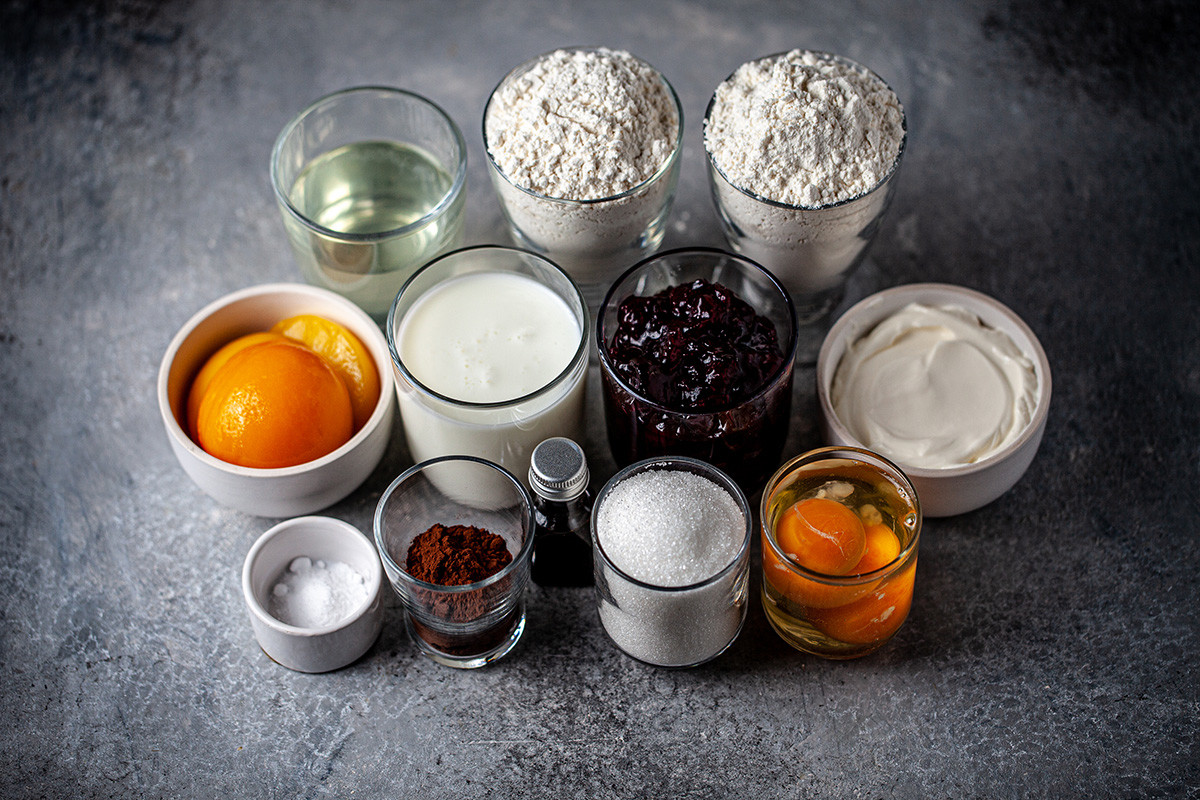
Sponge:
- Kefir - 1 cup (200 g)
- Jam - 1 cup (250 g)
- Flour - 2 cups (280 g)
- Sugar - 1/2 cup (85 g)
- Eggs - 2 pcs
- Soda - 1/2 tsp
- Salt - 1/2 tsp
- Cocoa - 1 tbsp
- Vanilla extract
Cream:
- Sour cream (30%) - 400 g
- Powdered Sugar - 50 g
- Orange zest - 20 g (optional)
Syrup:
- Syrup from canned peach halves
- Cognac - 2 tbsp (optional)
Cooking:
1. Begin by preparing the cream for the cake. Mix sour cream and powdered sugar. Put a pastry bag with a nose in a deep glass.
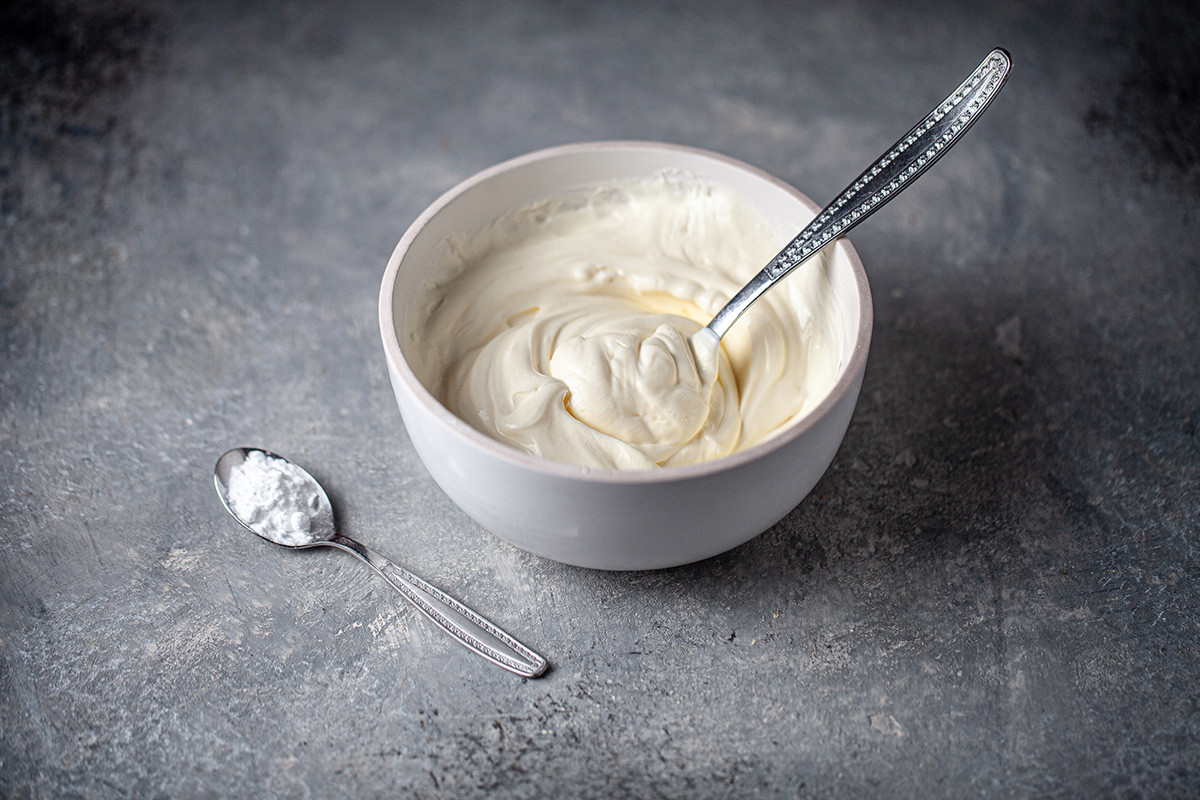
2. Place the sour cream mixture into the bag and keep it in the fridge during the whole cooking time; fat sour cream should be steady.
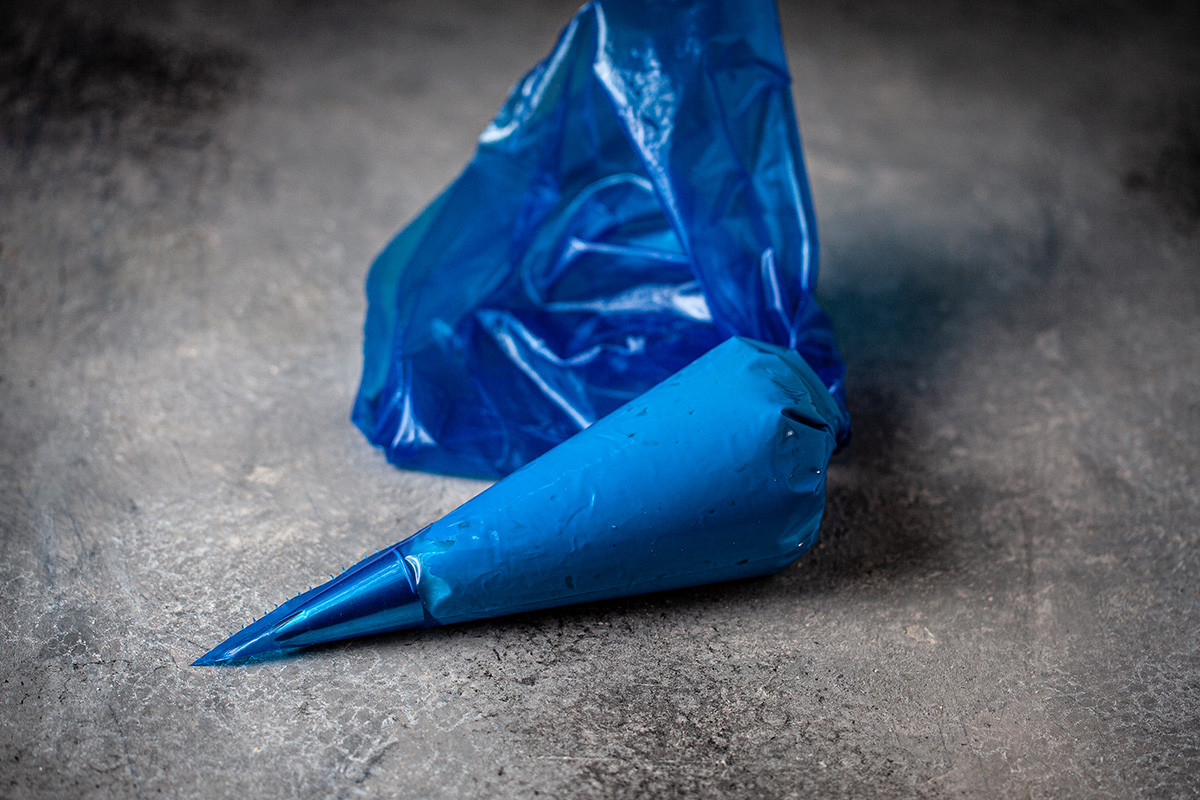
3. Add soda to kefir in a DEEP bowl. There will be a reaction which will serve the rising process. The mass will bubble and double in size.

4. Clop eggs with sugar till the mass doubles and becomes white.
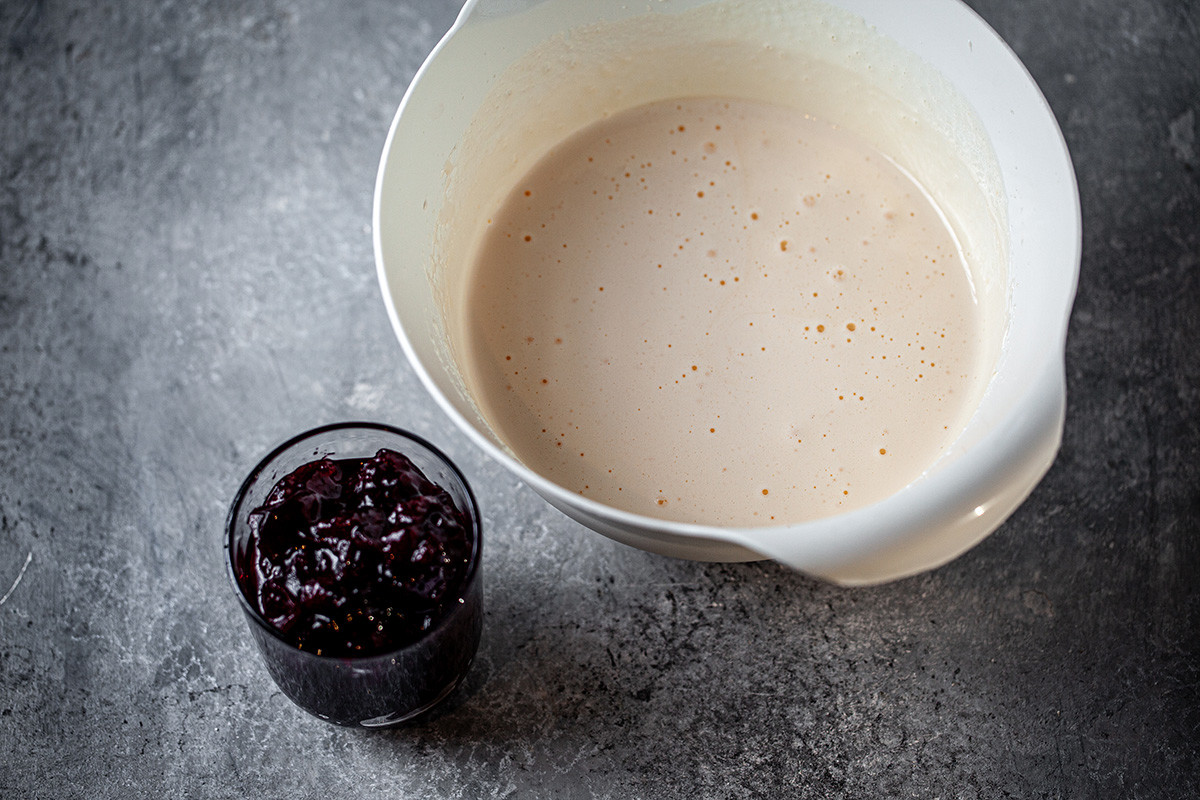
5. Add kefir, flour, salt, cocoa, vanilla and mix again with a mixer.
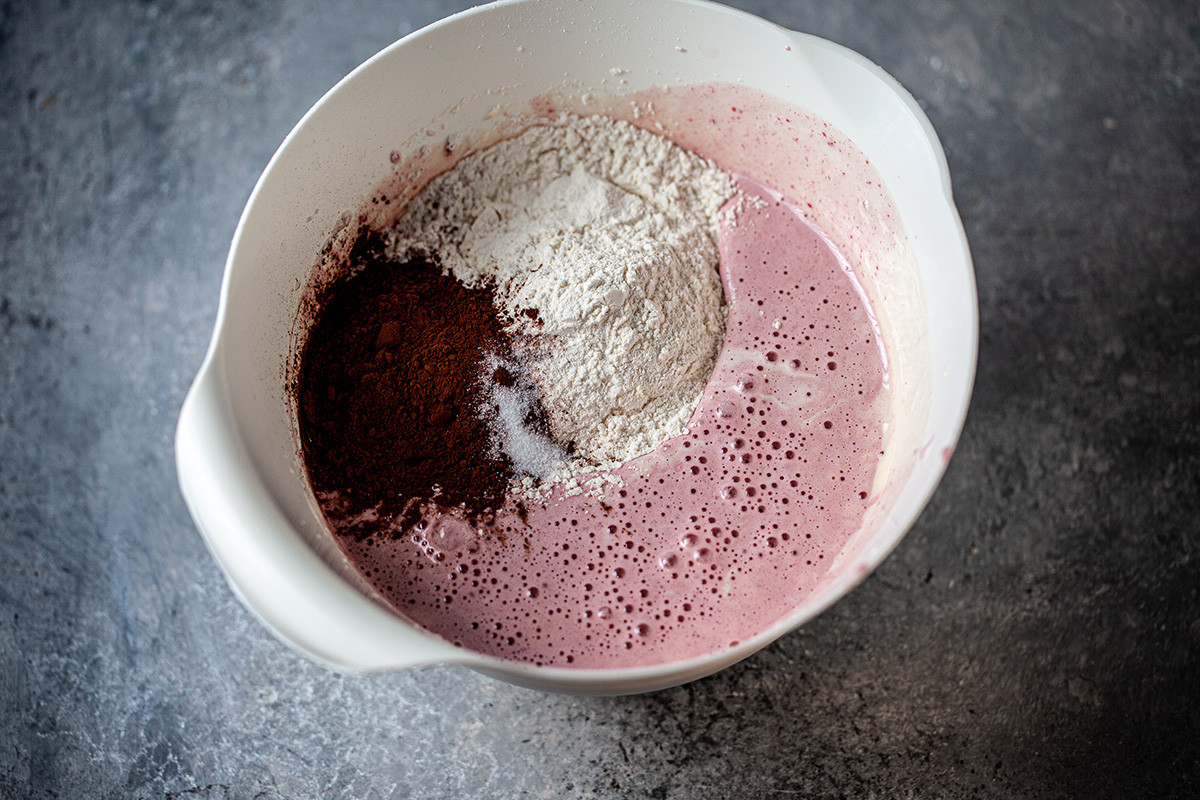
6. Prepare the baking form by putting baking paper on the bottom. Leave the walls untreated because the dough will climb a bit, sticking to them.

7. Bake the cake for about an hour. The cake will rise and crack on top.

8. Let it cool for 30 minutes till warm. Cover the cake with plastic wrap and leave it like this till it cools completely.

9. Cut the top to get a flat sponge.
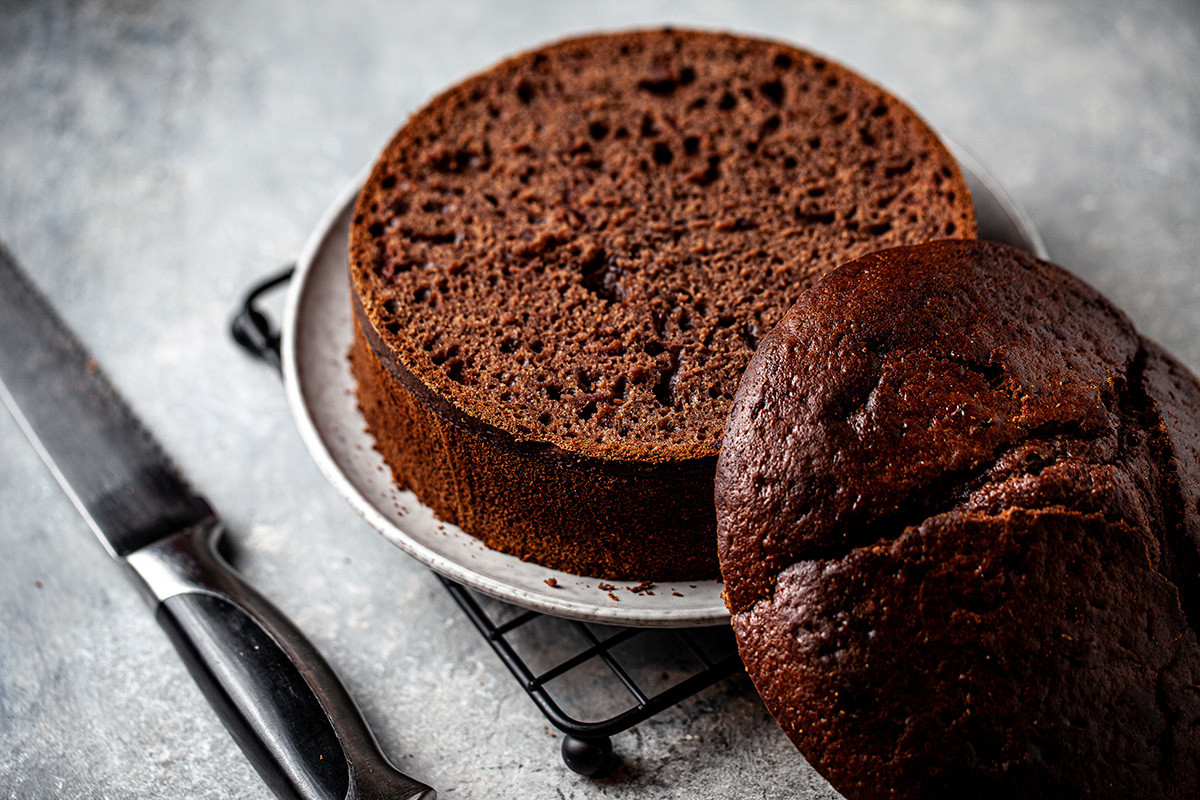
10. Cut the sponge into two layers.
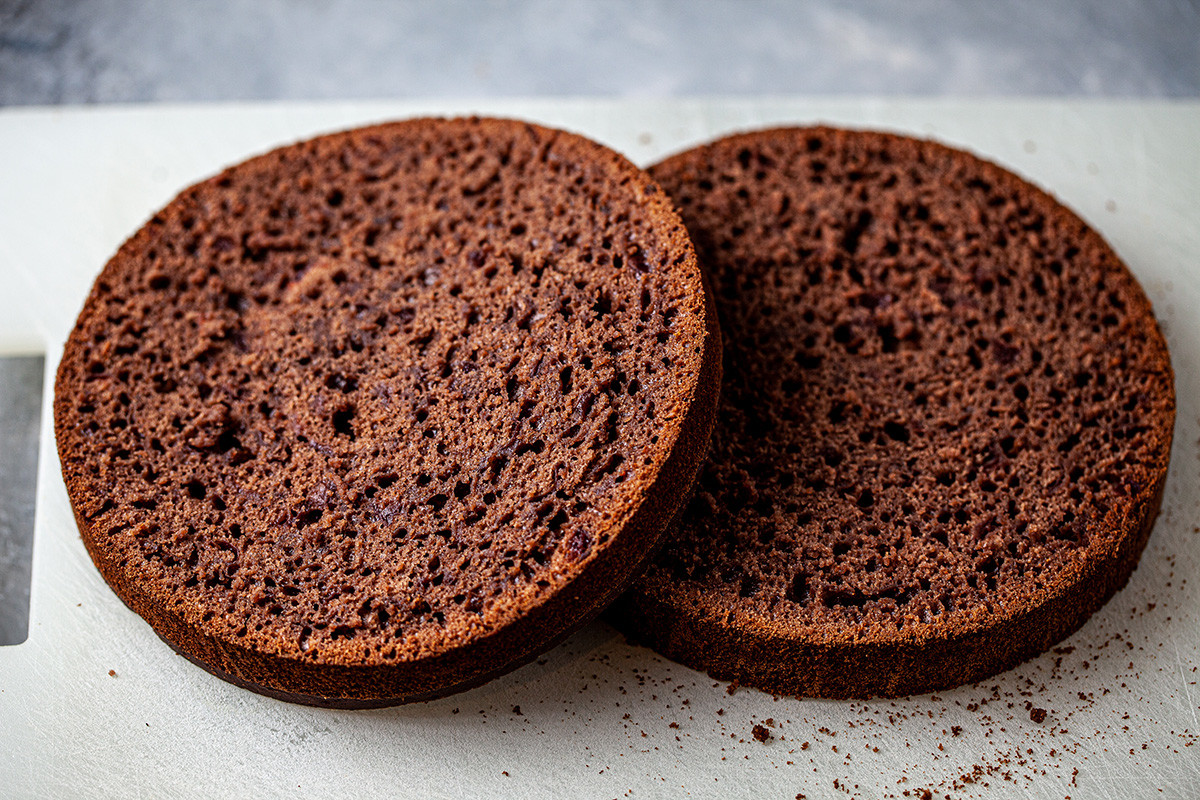
11. Soak each with peach syrup and cognac.
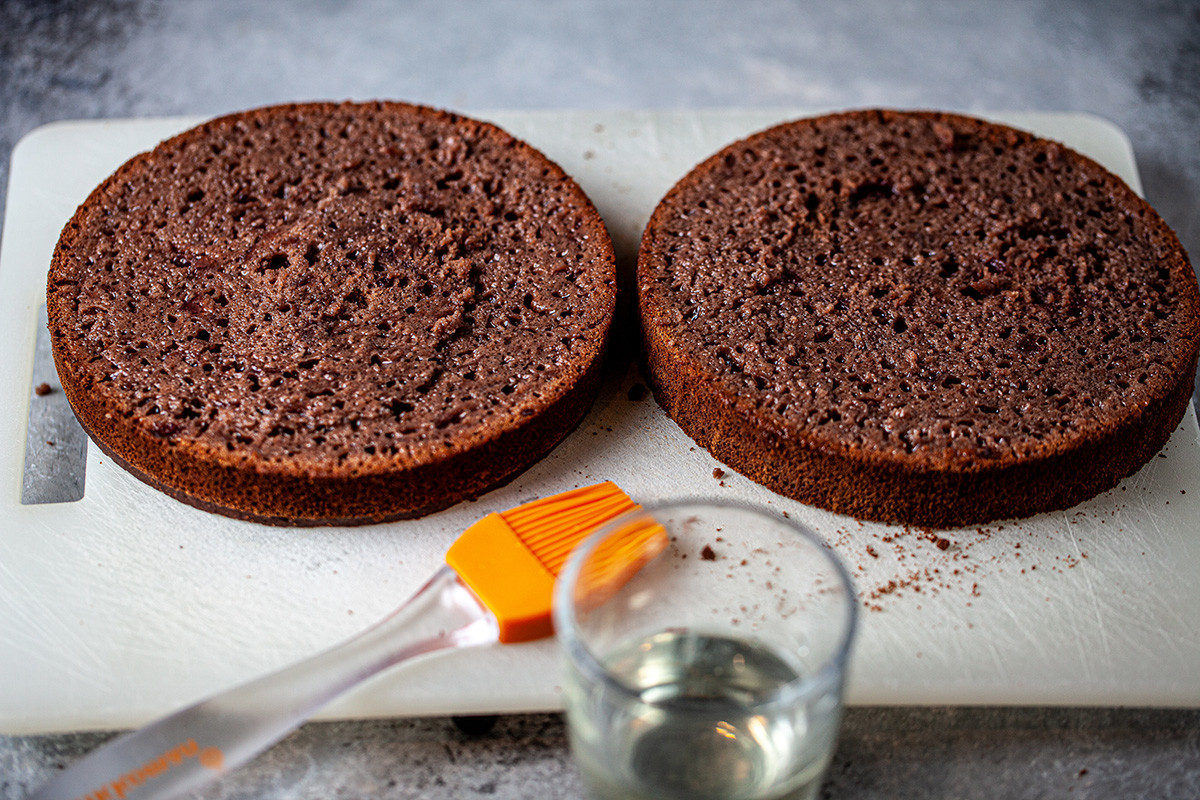
12. Apply the cream evenly on the first layer.
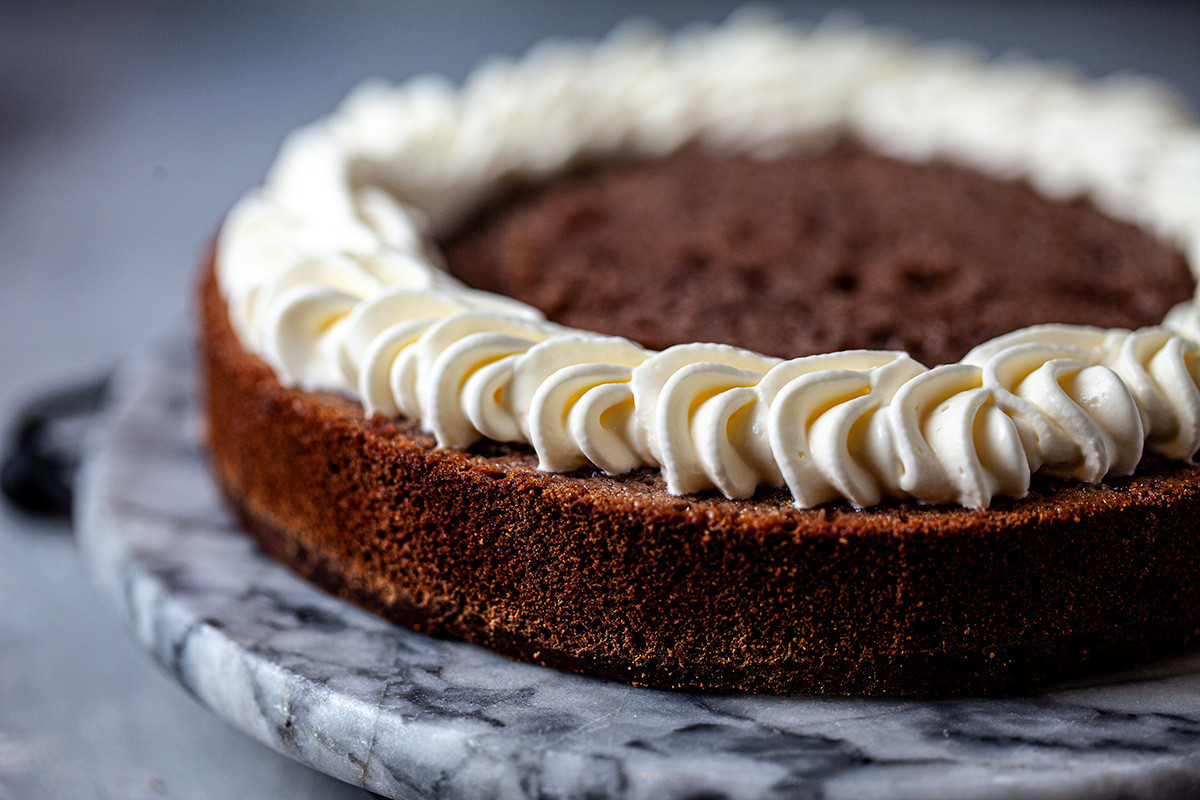
13. The top of the cake can be decorated with the cream, peaches and nuts. It is recommended to keep it in the fridge for a while, but you can try it straight away.
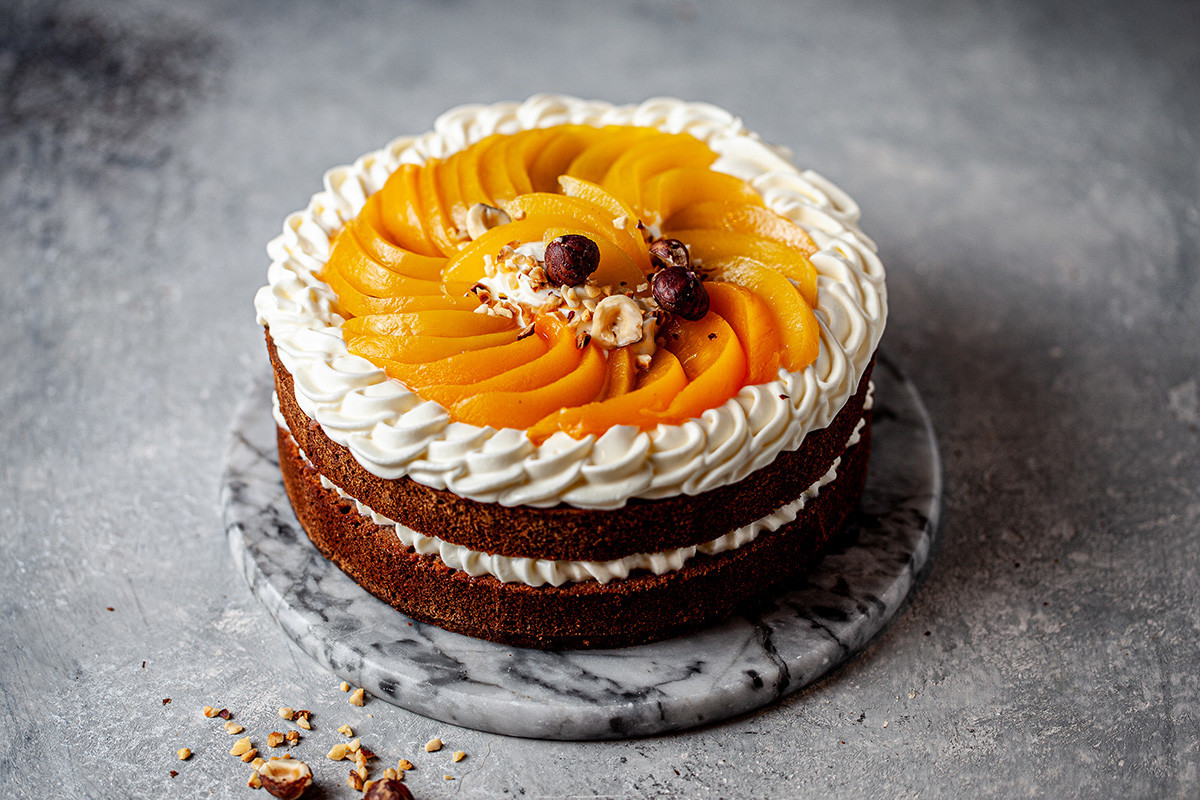
14. Enjoy!
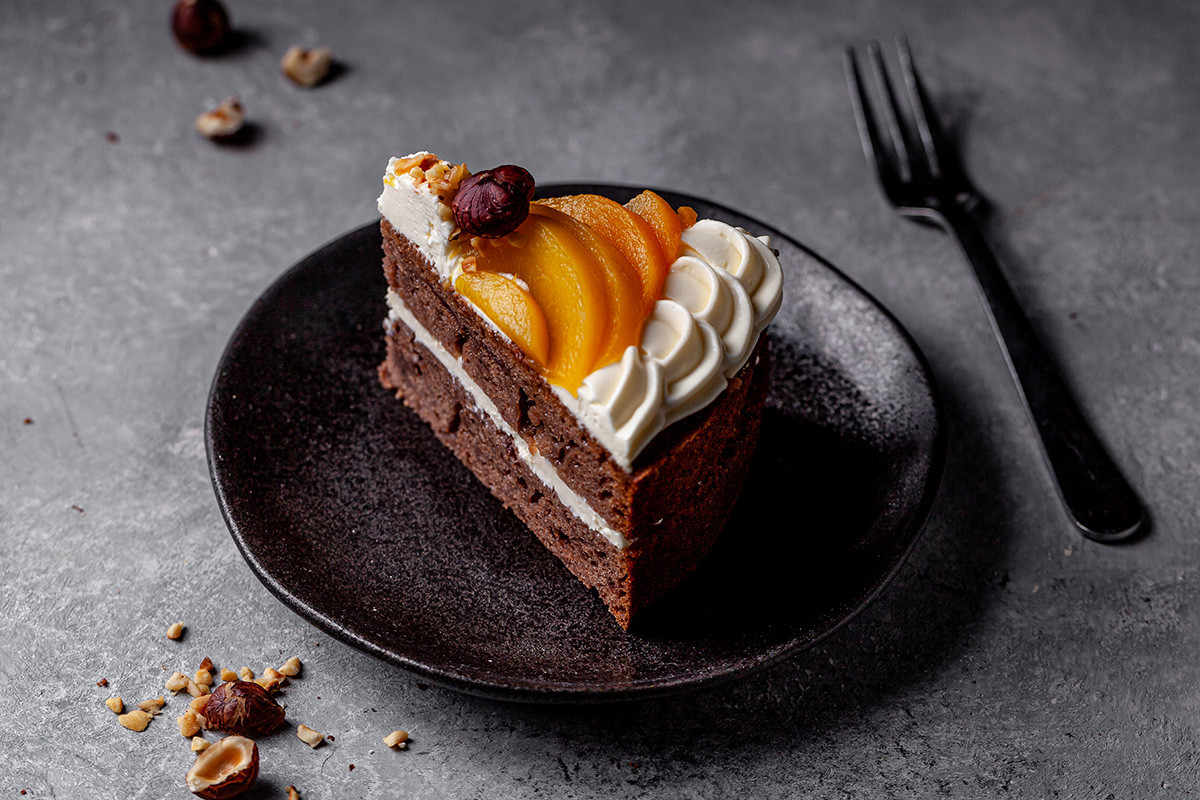
READ MORE: Echpochmak: Fast food from Tatar nomads (RECIPE)
If using any of Russia Beyond's content, partly or in full, always provide an active hyperlink to the original material.
Subscribe
to our newsletter!
Get the week's best stories straight to your inbox